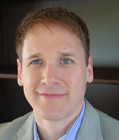Connect with the author
Few events strike as much fear in the hearts of the public as random, seemingly senseless group killings – including terrorist attacks and what have become known as “rampage shootings,” or “mass shootings.” These events include at least four victims and differ from other types of shootings because they take place in public places, do not have specific, personal targets, and are not associated with another criminal event like a robbery. Understanding the history of these tragedies can inform stronger policies to prevent them.
Public Concern over Rampage Shootings
Over the last few years, concern about mass shootings has increased, as media outlets claim that we are in the midst of an epidemic. The Public Broadcasting Service labeled 2015 “The year of the mass shootings,” and the National Broadcasting Network reported that “more mass shootings than days” happened that year. And the magazine Mother Jones published data displaying a recent spike in such events – reinforcing impressions of an out of control surge of mass shootings.
Is that actually true? Interestingly, despite the indications of recent upsurges in mass or rampage shootings, Grant Duwe’s research reveals that such events have occurred since the early 20th century. However, the 1960s did mark a turning point in which mass shootings increased substantially compared to the early part of the 20th century.
Overall, research is equivocal about whether mass rampage shootings are increasing, because definitions and data sources vary. Certain data sources indicate they are, while others are more conservative. The issue, it appears, is with definitions as well as data sources. For example, James Alan Fox and Monica DeLateur argue that Mother Jones created the illusion of a current epidemic by ignoring many earlier cases that could have been included. When they expand the definition of mass shootings, they show there has been no increase in recent years. The one exception is mass shootings in schools, which may indeed have increased in recent years.
No matter how they are defined, however, mass shootings are exceedingly rare events. Research by Duwe finds that the average, annual rate of U.S. mass shootings is less than one per 100 million people. Only 0.2% of all murders in the United States occur as part of mass shootings.
Causes of Mass Shootings
If establishing trends in mass shootings is difficult, getting at root causes may be even thornier. Scholars have pointed to several factors that may contribute to these disturbing events:
- Access to Firearms: Clearly a mass shooting requires that the perpetrators have guns. Gun access is a necessary but perhaps not sufficient causal factor. However, the evidence tends to suggest that the greater availability of guns per capita is correlated with heightened violence.
- Wounded masculinity: Nearly all mass shooters past and present are men. Shooters often have recently suffered some sort of threat to their identity or self-esteem. To the extent that masculinity is tied up with dominance and aggression, cultural issues could be at play.
- Media: Since the wave of school shootings in the 1990s, the media has been blamed for influencing these events. In fact, horror writer Stephen King pulled from publication his book, Rage – which describes a school shooting – because he was worried that there could be copy-cat cases. Much like the research on guns, however, research linking media portrayals to real-world violence is not conclusive.
- Mental Illness: Perhaps the strongest evidence is that mass shooters often have suffered from some sort of psychiatric condition. Studies of mass shooters have found that they suffer from mental illnesses at three times the rate of the general population.
Even with these factors in mind, it is important to note that mass shootings are not as different from “ordinary” murders as many people presume. Overall trends in mass shootings track with rates of crime in general, and the contributory factors are similar.
What Can Public Authorities Do?
Although there is still much to be learned about mass shootings, the evidence we have points to a few specific recommendations for policies that could reduce their incidence:
- Most important: increase access and availability of mental health treatment.
- Downplay cultural messages that glorify violence and aggression as central to masculinity.
- Institute evidence-based gun control measures. Part of the challenge is to develop better research on the relationship between guns and crime along with evaluations of the impact of specific gun control measures – such as background checks or bans on access by the mentally ill. Such policies are obviously politically controversial in the United States today.
In the quest to prevent mass shootings, Americans continue to seek a healthy balance between individual rights and societal safety. Notably, however, the best evidence suggests that any steps taken to reduce mass rampage shootings would resemble measures intended to reduce crime in general, especially violent crime.
Overall, more research is needed to reach more conclusive findings about trends and causes of mass shootings. Rigorous research on this topic is difficult because, fortunately, such shootings are quite rare. New research on these events remains of value, however, because they are very disturbing to the public’s sense of safety – and because finding new ways to prevent mass shootings can inspire steps also likely to reduce many more ordinary crimes.

